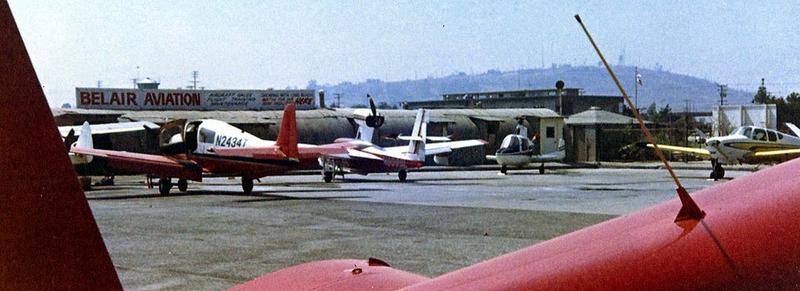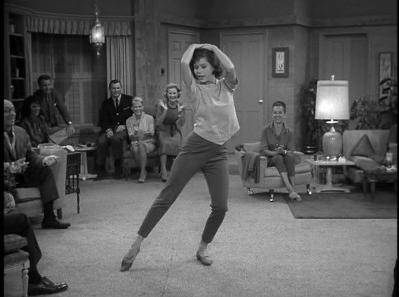denverpilot
Tied Down
Yeah. The good old days. No headsets. And now the hearing aid manufacturers are printing money.
Rock and Roll baby. If it’s too loud, you’re too old!
Yeah. The good old days. No headsets. And now the hearing aid manufacturers are printing money.
...and if it’s too quiet, you’re probably older yet.Rock and Roll baby. If it’s too loud, you’re too old!
...and if it’s too quiet, you’re probably older yet.
Especially if “too quiet” is your cue to circle the wagons.
The department needed a new tech - so they brought up a guy who had been working in engine buildup "out back". But now that he was in an engineering department he had to wear a tie just like the rest of us.I only wore clip-on ties.
Hah! I rented from BelAir in LGB in the early seventies.
That was nice...
But so much more FUN to be had in a high wing. From the same era...
Up until 1970 Belair was on Donald Douglas Drive on the west side of the airport, and that's where I took my commercial and instrument training. When I worked there Belair was in a couple of trailers and a Quonset hut on Spring Street just below the new control tower, as the new Avitat building (now "Terminal II Jet Center") was being built next door. I left around the time the school moved into the new building, and its name was changed. I forget what it was called after that. But if you rented from Belair it had to be before mid-1972.Hah! I rented from BelAir in LGB in the early seventies.


I "liked" your post because I agreed with it because it is so true. But I really hated it because it is so true. I never used a headset in the '70s and now I am paying (my hearing aide provider) the price for it.Yeah. The good old days. No headsets. And now the hearing aid manufacturers are printing money.
Up until 1970 Belair was on Donald Douglas Drive on the west side of the airport, and that's where I took my commercial and instrument training. When I worked there Belair was in a couple of trailers and a Quonset hut on Spring Street just below the new control tower, as the new Avitat building (now "Terminal II Jet Center") was being built next door. I left around the time the school moved into the new building, and its name was changed. I forget what it was called after that. But if you rented from Belair it had to be before mid-1972.Then it must have been 1970 when I was working in the Hughes Aircraft flight test division in Culver City; in early 1971, I left the country for an eighteen month tour on Kwajalein. I'd have to dig out my old logbooks, but it must have been one of the PA-28-140s. I hardly ever had more than one passenger back then.
The cars, the clothes, the office gear are all totally different but the airplanes are the same.
And 600miles in 4hrs in exactly what Cherokee of that vintage?


Good old days? I sure wouldn't have wanted to dress up like the wife. Actually, I grew up in the 60s and don't want to go back.
While the airplanes are nice, that hangar at the beginning of the film is gorgeous!
It was also interesting to see how well dressed we were 50 years ago.
The cars, the clothes, the office gear are all totally different but the airplanes are the same.
The manufacturers were reluctant to make the switch from statute to nautical. After all, a cruising speed of 160 mph looked a lot better in the brochure than did 139 knots.
The manufacturer-members of GAMA finally agreed to switch to knots as primary. Airspeed indicators on Cessna airplanes switched to knots on the outer scale, and mph on the smaller, inner scale, in 1976. Piper, Beech and Mooney switched in 1977.
Back then if you were flying IFR you were flying the needles. You were navigating using pilotage, wasn't much else. Lots of guys got lost, lots blundered into weather. I like things way better now. We're in the golden age of general aviation.
Yeah. The good old days. No headsets. And now the hearing aid manufacturers are printing money.
Honest question. Who watched these 15-20 minute films and where in the 60s? Three TV channels who didn’t carry this stuff, and certainly no YouTube.
What was the distribution method? On really old stuff like newsreels it was the theater before feature films.
But as these films promoting various stuff from the 60s and 70s get digitized and put online almost 50 years later, I always wonder who watched these infomercials of the past.
Like that hour long thing showing “the home of the future” someone posted a while back in the tech sub-forum... where would someone have even seen that thing?
My first 6.4 hours were in a Cherokee 140 at the Elgin Airport. The airport closed in 1983 so the land could be used for a shopping center.
Good old days? I sure wouldn't have wanted to dress up like the wife. Actually, I grew up in the 60s and don't want to go back.


My father got his private at Elgin in 1970. I got my first flight there as well, in the back seat of a Cherokee 140. His instructor was a gentleman and professional named Paul Wertheimer, who also taught bush flying to missionary pilots from the Moody Bible Institute.
I remember my mom wearing a "housedress" although that would not be my choice of clothes either. But I might wear the MTM outfit.You wouldn't normally dress up like that, unless you were going to an appointment or church. I recall my mother mostly wearing what was called a housedress, which was a simple dress usually in some sort of a print fabric, something along the lines of this:
She also wore a top and pants sometimes. Remember Mary Tyler Moore's famous Capri pants?

They were a compromise between her and the show's producers, because she wanted to present a more realistic view of what women in the early 60's wore at home.
But look at what we lost.
It would be shown to any group that was willing to sit for a viewing. Business groups, jaycees, Civitan, fraternal lodges, etc. People used to get out and meet in person. Now we all have too much work to do and don't have time to go to such things.
In 1964 as a member of the Vandenberg AFB aero club, I rented a C-150 for $7 an hour wet and my instructor charged $5 an hour ($12 an hour dual). That cheap flying spoiled me; when I got transferred PCS to Hill AFB, Utah, they had recently closed their aero club and I had to rent a 172 at the Ogden airport FBO to complete my training. What a sticker shock! I took out a credit union loan to finish my training and got my ticket on September 11, 1964, with exactly 40 hours in my logbook.
My solo cross-country was from Ogden, UT to Elko, NV and once I was west of the Great Salt Lake, the terrain all looked the same except for railroads, highways, and small clusters of buildings on the sectional chart. I remember feeling a little apprehensive about getting lost, but as my checkpoints showed up on time I got more relaxed. When I landed back in Ogden with the Elko FBO manager's signature in my log, I felt like I had really accomplished something.
they mention flying a Cherokee six at one point when they go for the joint lesson58 Willy !??
Guess the phonetic alphabet hadn’t been invented yet.
And 600miles in 4hrs in exactly what Cherokee of that vintage?
A Cessna film from the late 50's I believe.
.
